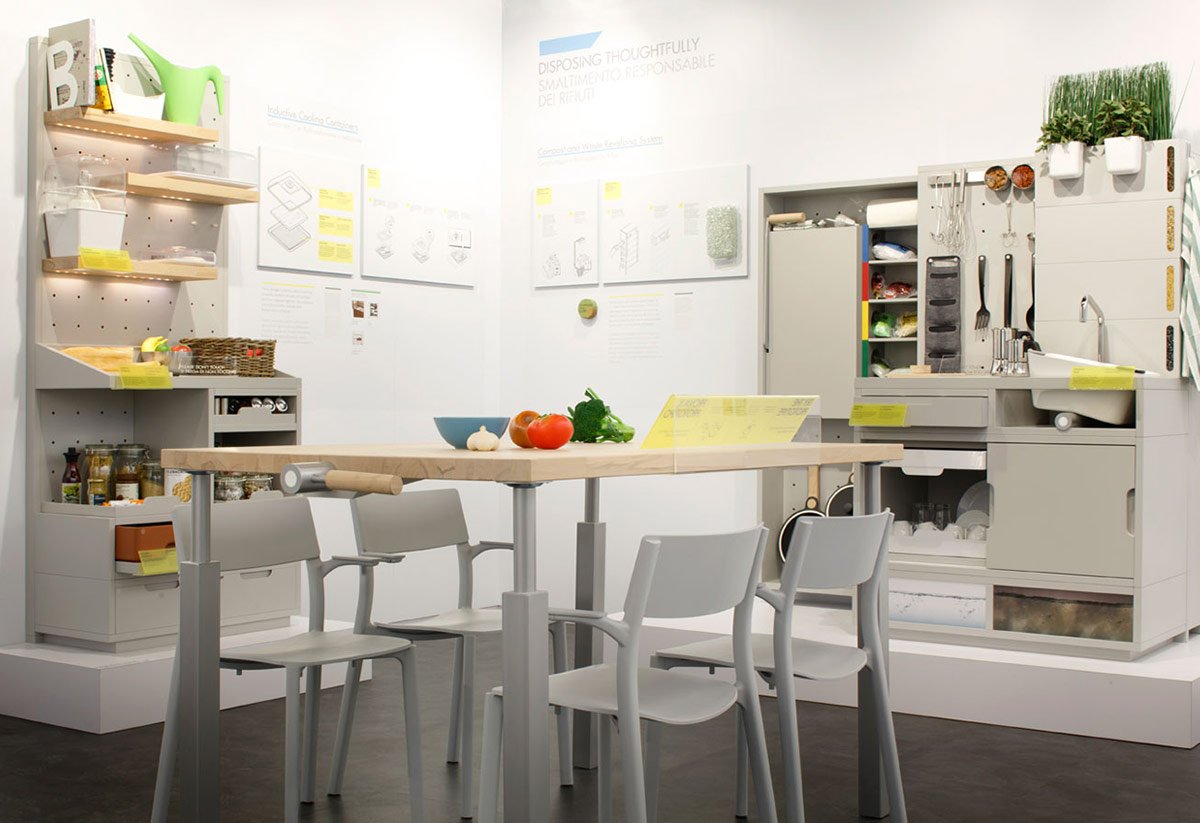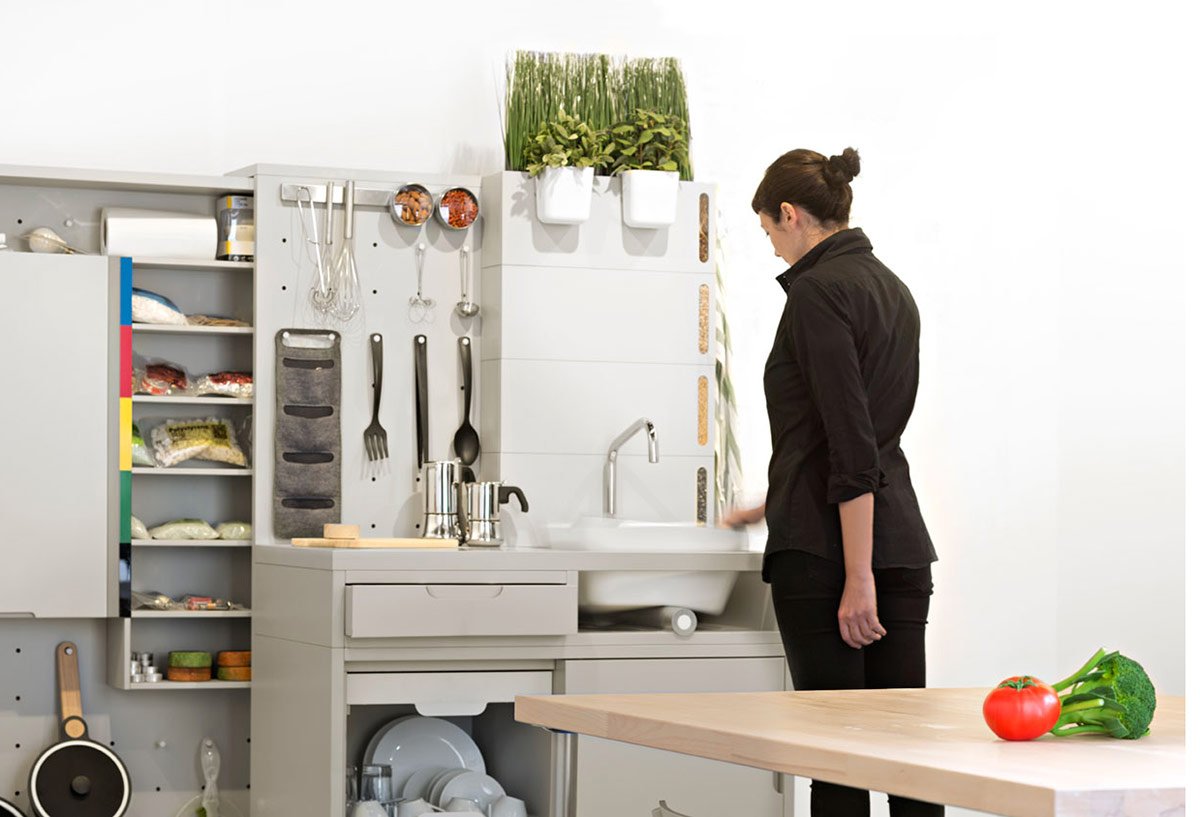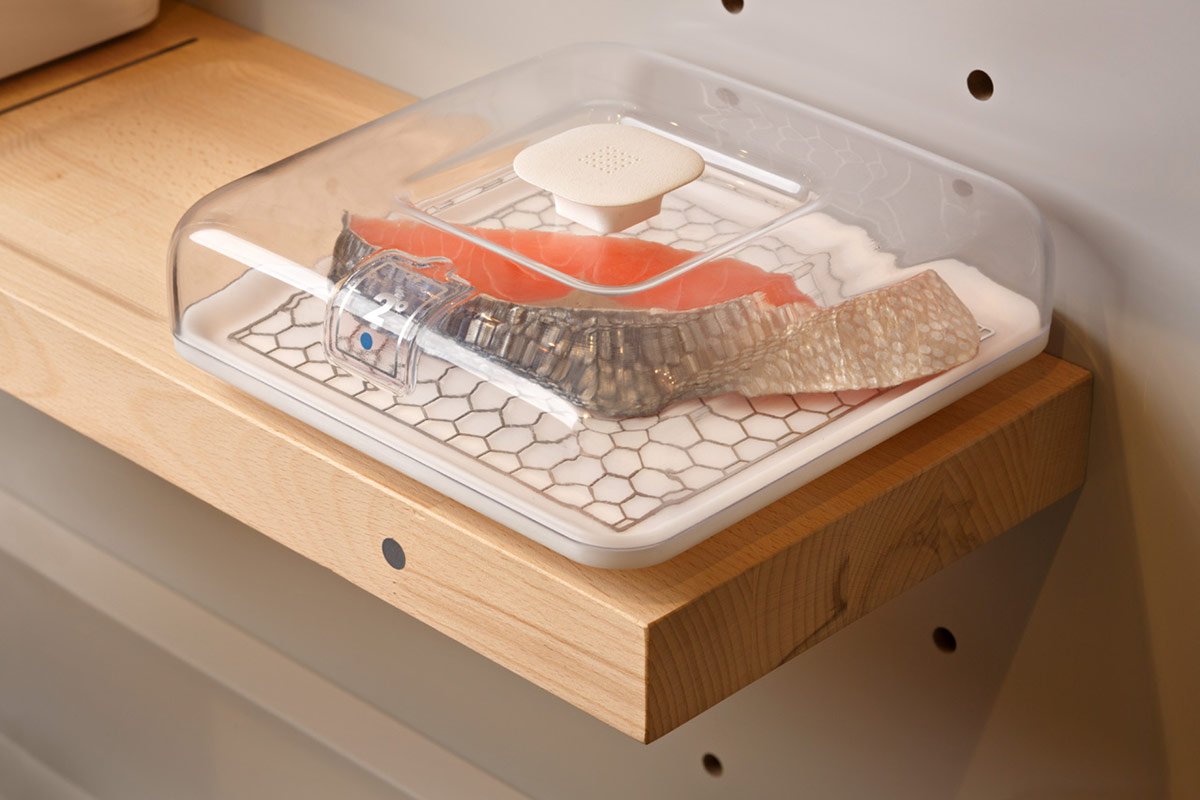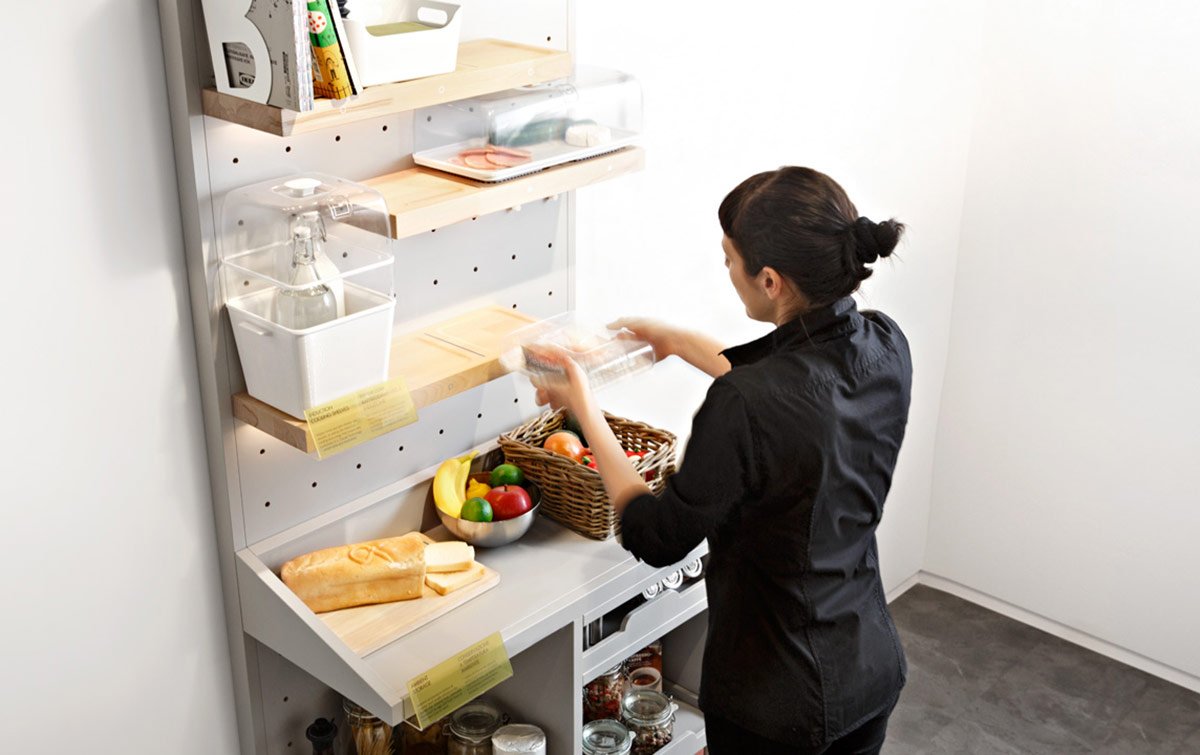When you hear the name “Ikea” you probably think about that futon that got you through college, or the bookshelf you bought for your first apartment. But the design giant, partnered with Ideo and Industrial Design students from Lund University and Eindhoven University of Technology, has done a lot more than manufacture versatile flat-pack furniture; their so-called “Concept Kitchen 2025” re-imagines the interaction between human life and consumption for a more sustainable future.
The design addresses issues of sustainability through almost every feature. A traditional fridge that conceals food and wastes energy is replaced with induction-cooling shelves, which allow you to see and use the food on hand through transparent containers. Efficiency resource use doesn’t end here; a built-in compost system compresses organic waste from the sink into dry, odorless pucks, extracting water that can safely be used to water indoor plants. The sink itself can be tipped in either direction depending on the purity of the water, so “grey” water is reused and “black” water is sent to a treatment facility. Even non-organic waste can be handled from the home, with a waste system that identifies the materials disposed of and rewards energy credits or debits according to the user’s efficiency.
The design addresses issues of sustainability through almost every feature.
While these prototypes work in beautiful harmony to imagine a more sustainable way of life, Ikea’s Concept Kitchen also considers the importance of our relationship to food in a world that is increasingly centered on technology. The “Table for Living” provides a surface for everything from food prep to work and play. With a camera and projector positioned directly overhead and induction coils underneath the table’s surface, it can recognize objects and provide relevant displays. Maybe you have tomatoes and onions in the fridge but don’t know what to make? Place them on the table and graphics will appear to suggest possible recipes.
Set your frying pan anywhere on the same surface to activate the built-in induction while projected guide lines will help you evenly slice and dice. Aside from these endless culinary functions that allow for mindful engagement with food, the table can even interact with children’s play, making the kitchen a universal space for everyday life. The innovative design focuses on “old world values and knowledge combined with the future’s technology and what will be possible,” reinforcing traditions around the ritual of cooking and eating while adapting to and taking advantage of technological advancements.









